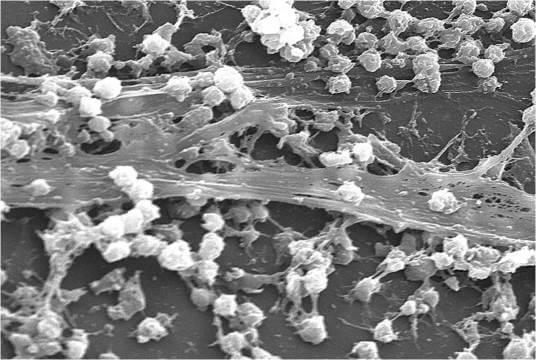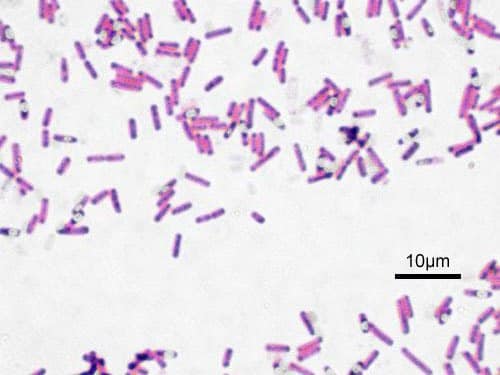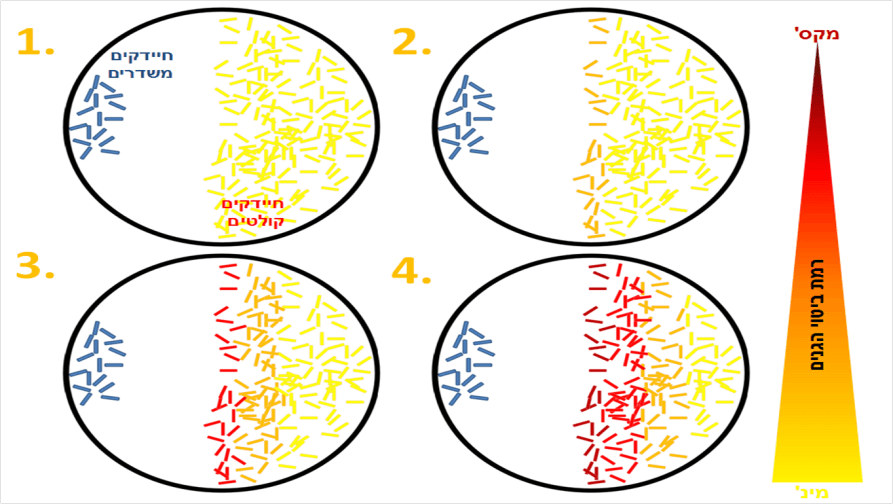I met with Dr. Roy Vidavsky to ask him what is being done there at the university.
Roy is a postdoctoral student in the Department of Molecular Microbiology and Biotechnology at Tel Aviv University. He works in the laboratory of Dr. Avigdor Elder and his main interest is communication between bacteria. Roy and his wife share their home with many pets, and in their free time enjoy ballroom dancing.
Roy, so what are you doing there?
The main topics the laboratory deals with are the evolution and development of communication between bacteria. In the past, it was common to think that a bacterium is a single cell that takes care of itself and does not interact with other bacteria, but today it is clear that bacteria 'talk' to each other. The language of bacteria is a very simple language based on sending and receiving small molecules. This language allows them to behave socially, that is, bacteria know how to recognize each other within the group and act for the common good.
Is there a known example of the social behavior of bacteria?
Yes, take for example the plaque in the teeth that we all know and don't like (a.k.a. carios and bactus). The plaque is one of the examples of something called biofilm (see Figure 2). There are certain types of bacteria that stick to surfaces, then following the communication between them they recognize each other and join together to form a multicellular structure. In this structure, different bacteria in different areas take on different roles. Some of them produce food, some form a shell that protects them from antibiotic substances and there are other functions as well. Biofilm can also be found on filters, on ship propellers, in sewage treatment plants and more.
Staphylococcus_aureus_biofilm

.
It is important to brush your teeth! Now let's go back to the lab, tell me about the work.
The group has two main research directions: evolution and development.
One of the subjects that interests us for example in the evolutionary aspect is the interrelationship between 'producers' and 'cheats'. It is a subpopulation within populations of bacteria. 'Producer' bacteria are those that secrete substances that are necessary to obtain food from the environment. 'Cheating' bacteria are those that enjoy the products but do not produce the substances themselves. We are interested in understanding the interrelationships between the two types of populations and where the evolutionary advantages are in the system.
On the topic of development, we are trying to characterize communication systems and understand how they work in different situations of social behavior of bacteria.
Can you give an example?
Yes, let's talk about 'swarming'. When bacteria, for example of the type Bacillus subtilis (see photo 2) which we use as a research model, are on a semi-solid substrate, let's say a type of gel, and feel that there is no longer an abundance of food in their environment, they group together and move to a better place. A single bacterium cannot improve attitudes in this way alone. In this process, a large number of bacteria secrete a lubricant that helps to slide. Today, the division of roles within the bacterial population in this process is still unclear. Also, it is not clear which genes are involved in the process, what their role is and when they work.
Bacillus_subtilis

In order to monitor the expression levels of certain genes (how many proteins are created) during social activity, we changed them so that during their activity they also produce a fluorescent protein that can be seen under a suitable microscope. We grow the bacteria on a substrate of food under the examining eye of the microscope. In this way we can map the intensity of gene expression in time and space during the swarming process, and see in which bacteria and at which stage of the process those genes are expressed.
How is communication between bacteria carried out?
The Bacillus bacteria we use produce short proteins called peptides which they secrete out. Bacteria also have the ability to sense the presence of those peptides through receptors to which they bind and cause the activation of genes. In other words, the bacterium has transmission and reception components. Those 'cheats' for example that we mentioned earlier are bacteria that are able to excrete but not absorb due to defective receptors. They are actually 'deaf' and therefore do not behave like the rest of the population.
Tell me about one of the projects you're working on
I am interested in producing a synthetic communication system that will serve us as a work tool and will be more convenient and easier to operate but will still allow research of issues related to real communication between bacteria. The idea is to produce three variants of the same bacterium Bacillus subtilis that I mentioned earlier. One that only transmits, one that only receives and one that can perform both operations.
To produce the three variants without damaging the natural genes of the bacterium, I used genetic engineering techniques to transplant a communication system (genes for receptors and genes for peptide production) from its relative - Bacillus cereus. That is, I created a population that only has a transmitter and a population that only has a receiver. Since both the transmitter and the receiver were taken from another bacterium there is no mixing of the signals or 'talk' between the original system and the transplanted system.
And if we have already implanted a system, why not introduce some improvements in it. The implanted system produces fluorescent proteins during reception, and it also has a volume button for the power of the transmission. We built it so that we can control the rate of peptide production externally by adding certain sugars. The bacteria and the system we created do not exist in nature and are therefore called 'synthetic'.
And after you have created the system, is it ready for action?
no way. We need to characterize and calibrate its spatial elements so that it fits the experiments we are interested in performing, or alternatively, we need to understand what questions can be investigated with its help.
What do you mean?
Let's say for example that I have a bacterium that secretes a signal. The secreted molecules spread through the process of diffusion. If I want to conduct research using it, I must know the nature of the propagation of the signal in time and space, that is, know what the strength of the signal (concentration of molecules) is at different distances from the transmitter as a function of time and look for suitable conditions for the work (that will not be too fast, for example).

Under the microscope we look for the fluorescent light produced when the transmission signal (peptide) is received by a receiver bacterium. This way we can measure when illumination is created, how strong it is and how far it is from the transmitting bacteria. The farther the receptor is from the transmitter, the lower the illumination intensity is observed because less peptide has reached it (see Figure 3).
When the research tool is ready we can use it to ask the questions that interest us. For example, we can follow the action of genes related to social behavior and see how their different expression levels affect the population (development), or test the effect of concentrations of cheaters in the population (evolution).
----------------------
I would be happy to meet and talk with any research student (maybe you?) who is willing to participate and tell me a little about what he is doing (and all for the price of a not too long conversation). You can contact me via Contact Us Form.
It's time to tell everyone what you're doing, maybe this time they'll understand too 🙂
